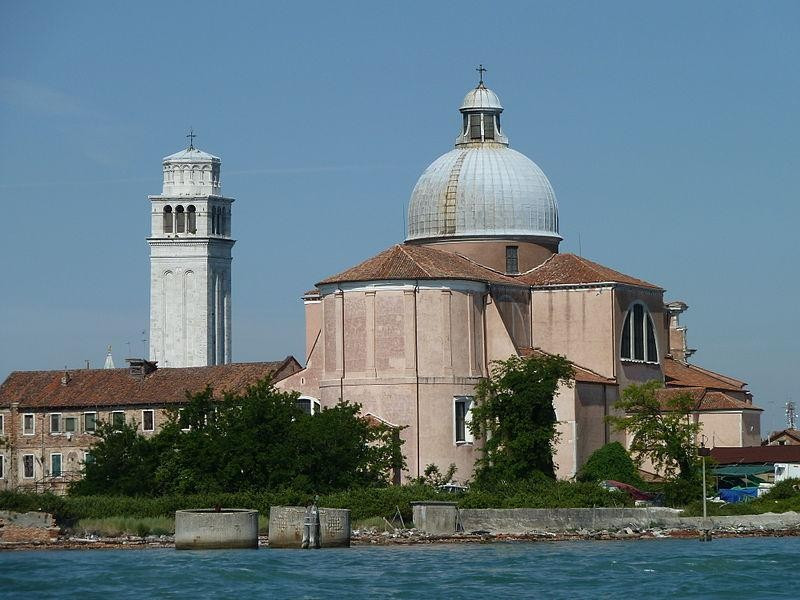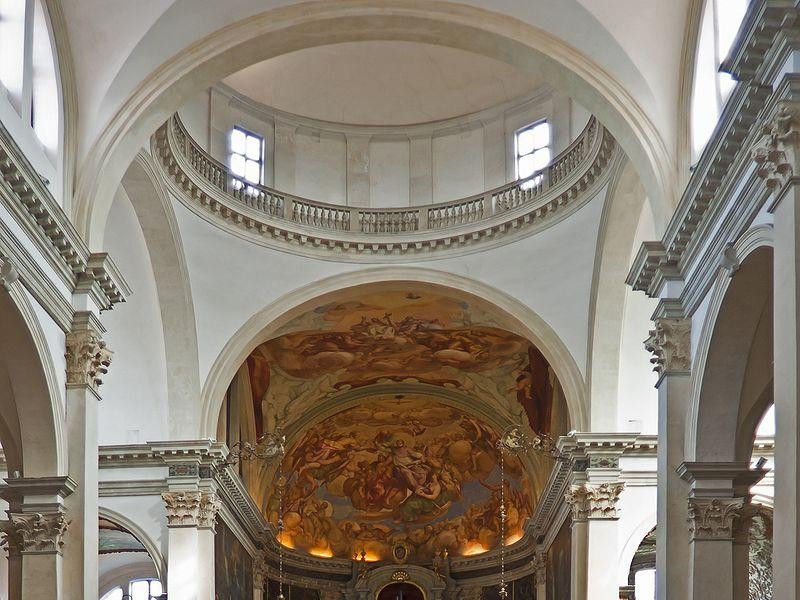Basilica di San Pietro di Castello
Located at the north-eastern city of Venice, in the Castle district, it was founded in the seventh century on the Olivolo Island and consecrated to the Byzantine saints Sergius and Bacchus. When Venice became new capital of the Duchy, in 841 the Cathedral was rededicated to St. Peter the Apostle. In 1120 a fire destroyed the Church and the new structure, faithfully reported on the plant by Jacopo de' Barbari of the sixteenth century, it took on a more majestic, with an adjoining Baptistery, now lost. Remodeled several times over the centuries: in 1559 by Palladio; in 1619 Gerolamo Grapiscia oversaw the construction of the interior; in 1807, at the behest of Napoleon, the patriarchal seat was transferred to St. Mark. With the transfer of the headquarters, the Monastery adjoining the Basilica was transformed into Powder. The plant dates from 1120, when a fire destroyed the previous Church: the structure had three naves, with tripartite facade and circular apses, also incorporates the facade a tripartite system, with the raised central part, resting on four half ending in a eardrum. It Is 1646 the great altar on which are the remains of St. Lowrence Giustiniani, first Patriarch of Venice, by Clemente Moli, who were given the task of sculpting also some statues designed by Baldassarre Longhena, who also designed the Chapel dedicated to Cardinal Francesco Vendramin, on the left aisle. The Bell Tower started in 1463, it was damaged by lightning in 1482 and rebuilt by Mauro Codussi, who covered it entirely of Istrian stone, but the dome from him on purpose at its top was then replaced by a polygonal drum. The St. Peter's Chair, which traditionally belonged to the same Apostle when he was bishop of Antioch, is built by a back set in an old gravestone bearing Islamic motifs and engravings in Kufic Arabic verses by the Koran. Including paintings more present, "Supper at Emmaus", by Peter and Antonio Malombra Vassilacchi, on the left wall of the portal.





